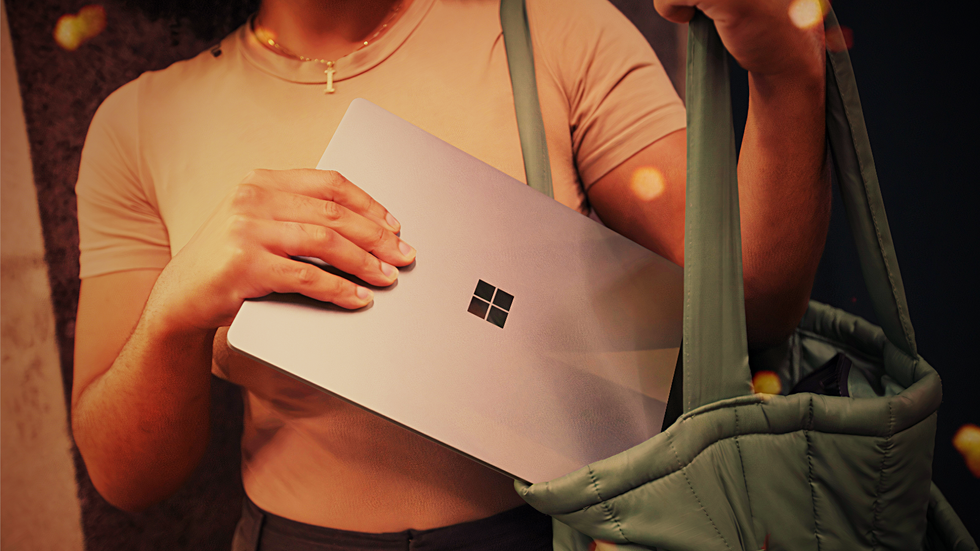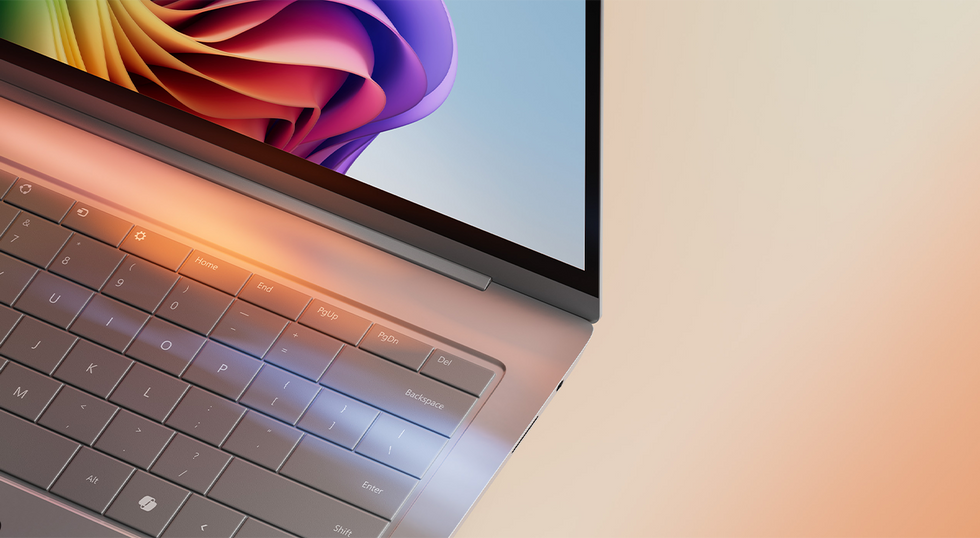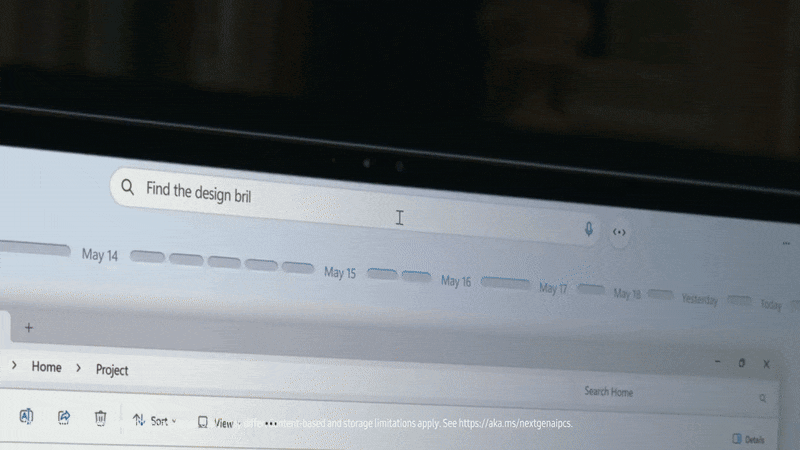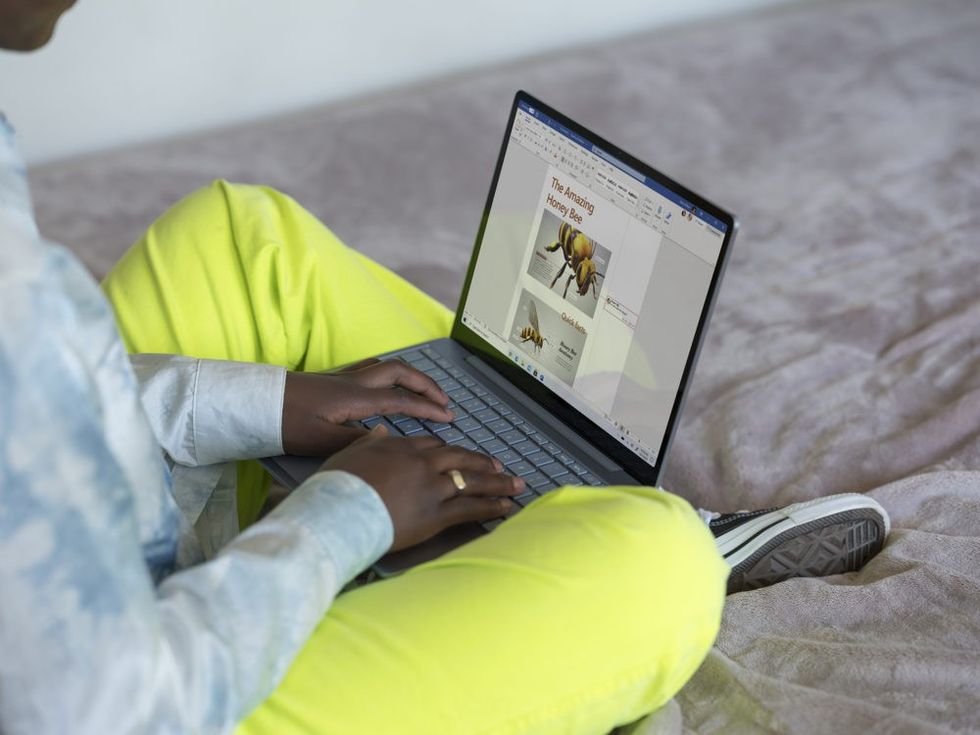Countdown begins to end of Windows 10: PC users have three lifelines, and just 365 days to make a decision

All products and promotions are independently selected by our experts. To help us provide free impartial advice, we will earn an affiliate commission if you buy something. Click here to learn more
Microsoft will put an end to critical security updates and new features for Windows 10 on October 14, 2025
- It's exactly one year until Microsoft culls support for Windows 10
- Despite the looming deadline, millions still rely on the operating system
- Windows 10 remains the most popular OS version, used on 62% of PCs
- Microsoft sparked controversy by telling users to buy a new device
- But there are other options available for Windows 10 users
Don't Miss
Most Read
Latest
Exactly one year from now, Microsoft will cull support for Windows 10.
If you rely on the operating system every day, the countdown timer has begun and you've got just 12 months left to prepare for the monumental shake-up. Despite this looming deadline, Windows 10 remains the most popular iteration of the desktop operating system — used on 62.7% of the 1.6 billion Windows-powered PCs worldwide.
From October 14, 2025 onwards, Microsoft will no longer issue critical software updates to fix vulnerabilities, bugs, and glitches in the software. Without these, Microsoft warns that anyone still using Windows 10 will be left "at greater risk for viruses and malware".
As the clock ticks down for millions, this milestone in the life of Windows 10 — first launched in July 2015 — is a good time to take stock and consider the three choices facing desktop PC and laptop users: upgrade to Windows 11, buy a new device with Windows 11 preinstalled, or pay for additional support to maintain digital security.
Upgrade to Windows 11
If you're using a Windows 10 machine that meets the minimum criteria to run Windows 11, then Microsoft will let you upgrade to the newer operating system free of charge. The Redmond-based firm has already started to preemptively notify compatible Windows 10 PCs about this cost-free option.
Check the eligibility of your laptop or desktop PC using the PC Health Check app baked into the operating system, or third-party tools like WhyNotWin11. If your hardware is compatible, the simple upgrade process involves clicking the Windows Start button, then select Update & Security> Windows Update.

Microsoft will drop support for any laptops or desktop PCs running Windows 10 in the next 12 months
| MICROSOFT SURFACE PRESS OFFICE | GBNWindows 11's minimum requirements have been a point of contention since its release back in October 2021. The desktop operating system demands a 64-bit processor, a minimum of 4GB of RAM and 64GB of storage. More controversially, it requires TPM 2.0 and Secure Boot capabilities, features absent in many older PCs.
Microsoft says this hardware is required as it enables many of the security features baked into the operating system — making it more secure and ensuring your important files remain under lock-and-key.
While there are unofficial workarounds exist to bypass eligibility checks — enabling PCs that do not meet these requirements to install the successor to Windows 10, these involve registry modifications and may lead to future update issues. Some users have found success with third-party tools like Rufus, which offers a Registry bypass hack for Windows 11 24H2 in-place upgrades on ineligible systems.
Without these workarounds, the strict requirements have left numerous Windows 10 users unable to upgrade, causing some to warn that as many as 240 million working laptops could be destined for landfill.
 Brand-new laptops from Microsoft, Samsung, ASUS, and others come equipped with the latest Qualcomm chipset to enable exclusive features in Windows 11, like real-time translation, improved video call quality, and Recall. There's also a new key on the keyboard to launch the Copilot AI assistant | MICROSOFT PRESS OFFICE
Brand-new laptops from Microsoft, Samsung, ASUS, and others come equipped with the latest Qualcomm chipset to enable exclusive features in Windows 11, like real-time translation, improved video call quality, and Recall. There's also a new key on the keyboard to launch the Copilot AI assistant | MICROSOFT PRESS OFFICE Upgrade to a new device
If you can't upgrade the operating system running on your current device, then it might be time to upgrade the hardware itself. Microsoft sparked controversy by advising users to "buy a new PC" if their current hardware doesn't support Windows 11. The guidance — published in a recently updated support document — raised eyebrows due to potential environmental and financial impacts.
Critics argue that discarding functional computers due to its decision not to allow them to upgrade to a newer version of the operating system generates unnecessary electronic waste, or e-waste. However, Microsoft contends that new devices offer enhanced security features and a smoother transition to Windows 11, which boasts an entirely new look and AI-powered capabilities.

Recall is one of the flagship features of these new Copilot+ PCs as it lets you search for text, images, and URLs that have appeared on-screen on your laptop. Microsoft has described the feature as a "photographic memory" for everything you do on your Windows 11-powered Copilot+ PC
| SAMSUNG PRESS OFFICEIf you're shopping for a new desktop PC or laptop today, then you won't find hardware that ships with Windows 10 preinstalled. The newer Windows 11, which launched in October 2021, has become the standard for all modern PC hardware.
Earlier this year, MIcrosoft introduced a new segment of PCs — known as Copilot+ PCs — that deliver unique Artificial Intelligence functionality, including the controversial Recall feature. These Copilot+ PCs also have a new key on the keyboard dedicated to the Copilot AI assistant, the first shake-up to the Windows keyboard layout since the Start key was introduced back in 1994.
Microsoft has spearheaded this all-new category of Windows 11 laptops with its own new Surface Laptop and Surface Pro, while Samsung's first Copilot+ PC is Galaxy Book 4 Edge. There are also devices with all of the exclusive Windows 11 features from ASUS, Lenovo, and HP too.
Pay for additional support on Windows 10
For the first time in its history, Microsoft will offer its optional Extended Security Updates (ESUs) subscription plan to both businesses and consumers. Previously reserved for companies with a large fleet of devices, this paid programme allows firms to receive critical security updates for up to three years after the end of support.
Microsoft has confirmed plans to offer Extended Security Updates (ESUs) for Windows 10 and published pricing, with the first year due to set back businesses $61 (£48.19).
To incentivise Windows 10 users to upgrade to the next iteration of the desktop operating system, Microsoft will double the cost every year. The full breakdown of costs is as follows:
- Windows 10 ESU — $61 (£48.19) for first year
- Windows 10 ESU — $122 (£96.39) for second year
- Windows 10 ESU — $244 (£192.78) for third and final year
This is not the cost for consumers, with Microsoft promising that pricing for the average Windows 10 user “will be shared at a later date.” However, we're likely to see the same pricing structure, with costs doubling each year to try to push people to finally switch away from Windows 11.
It's also worth noting that these prices are per device, so ESU can quickly become pretty expensive if you've got a swathe of laptops and desktop PCs that you don't want to upgrade to Windows 11.
MIcrosoft has stated that ESU pricing for everyday home users will be revealed closer to the deadline. GBN will keep you updated as soon as we know the official UK pricing for business and home users.
Some industry watchers had speculated that Microsoft would be forced to offer extended support for Windows 10 at no extra cost due to the vast number of PCs still powered by the operating system. However, despite the widespread usage, Microsoft is seemingly set on charging for the privilege.
This has allowed rival Google to take advantage of the situation to bolster its own marketshare of desktop PCs by offering a free upgrade for all Windows 10 users to its ChromeOS system, which is based on the world's most popular web browser and boasts years of security updates and support.
Third-party security firm 0patch has also used the opportunity to muscle-in on Microsoft's territory — offering critical software support to Windows 10 users after the October 14, 2025 deadline at a much more affordable cost than Microsoft wants to charge.
What happens if you don't do anything?
Continuing to use Windows 10 after support ends carries significant risks.
Microsoft has issued a stark warning to millions of PC owners that unsupported devices will be "at greater risk for viruses and malware". That's because, without a regular drumbeat of security updates, PCs quickly become vulnerable to cyber attacks and data theft. Any glitches or vulnerabilities discovered in the operating system by hackers will never be patched, leaving you exposed each time you head online.
But it's not just about losing security features. Windows 10 users will almost certainly find that certain features or software no longer function properly over time. To safeguard your digital security and ensure smooth operation, it's crucial to plan your transition away from Windows 10 before the October 2025 deadline.
Microsoft's Jason Leznek emphasised the importance of preparing for the transition: "By now, you've probably heard that Windows 10 will reach end of support on October 14, 2025.
"You can enroll those PCs in the paid Extended Security Update (ESU) program. ESUs allow you to receive critical and/or important security updates for Windows 10 PCs when you need extra time to move to Windows 11"
 Windows 10, which launched back in 2015, is still used by millions of people worldwide | MICROSOFT PRESS OFFICE
Windows 10, which launched back in 2015, is still used by millions of people worldwide | MICROSOFT PRESS OFFICE What's new in Windows 11?
If you haven't used Windows 11 before, the latest desktop operating system boasts an entirely-new look with tightly-rounded corners across all applications, similar to macOS. There's also a lot of transparent elements and you can switch between Light and Dark Modes throughout the day to make everything easier on your eyes.
Windows 11 puts a new focus on Copilot — the latest Artificial Intelligence (AI) assistant built by Microsoft, which can find documents across your hard-drive and cloud storage, change system settings, translate in real-time, and much more. Microsoft has also improved the Snap functionality to send applications to corners of the screen, with groups saved so you can jump back into the same layout at a later date.
 Windows 11 reworks the design of the operating system and brings the iconic Start Menu to the centre of the screen for the first time | MICROSOFT PRESS OFFICE
Windows 11 reworks the design of the operating system and brings the iconic Start Menu to the centre of the screen for the first time | MICROSOFT PRESS OFFICE The Start Menu has also been redesigned, and sits at the centre of the taskbar that runs along the bottom of the screen. Windows 11 also resurrects widgets, which feature personalised feeds of the latest headlines, weather forecasts, traffic conditions, sports scores, and stock market data, all powered by Artificial Intelligence.
For the first time, Windows 11 lets you set a different wallpaper image or colour for every virtual desktop you're running — handy for those who use one desktop for work applications and another for personal use. Default apps, like Photos, Notepad, Media Player, Mail, and Settings have all been redesigned from the ground-up too.
Since there's no end of support deadline on the horizon for Windows 11, PC owners can expect to receive a swathe of new features, new designs, and clever AI tricks coming in free software updates in the coming months and years.










